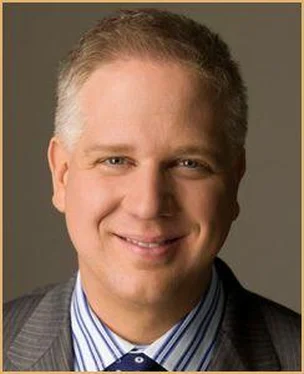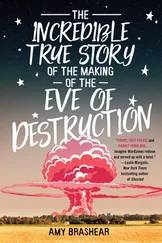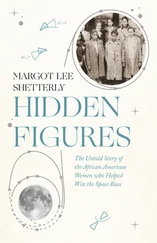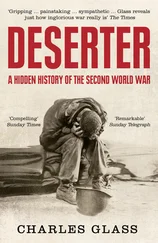“We’re going to have to get some charges up there on the building”: Bill White Oral History, 22.
Notes on specific scenes and characters:
The August 3, 1936, scene is imagined, as are many of the details. We don’t know much about what Bill White’s parents did for a living, but we do know that Bill grew up relatively poor (the part about not having a lot of shoes is from his oral history). We also know he liked westerns, though we don’t know specifically whether he listened to the Lone Ranger.
The December 8, 1941, scene is imagined, though it is based on known facts about the characters present, such as Windy Wise.
The November 16, 1945, scene is imagined but was inspired by the fact that many GIs were beaten up, arrested, and fined. The record is not clear about specific names.
The March 24, 1946, scene is imagined, though it was inspired by the fact that there was a secret meeting before this date that Bill White was not at.
The July 3, 1946, scene is imagined. There were threatening phone calls made, but it’s unclear whether Bill White received one.
Much of the July 4, 1946, scene is imagined. There was a rally that day, but we don’t know whether or not Bill White spoke at it. White’s speech does, however, use some of the epithets that were used by others throughout the campaign to criticize Cantrell’s machine, like “Gestapo thugs.”
In the July 25, 1946, scene, the wording of the letter is imagined. The record merely says there was a letter requesting FBI observers be present on election day.
The conversation in the August 1, 8:20 A.M. scene between Bill White and the delivery man is imagined, though the record is clear that the delivery man had been making a lot of deliveries in recent days as people in the county stocked up on ammo. White’s actions in this scene are also imagined.
In the August 1, 3:00 P.M. , scene, several reports say that Wise actually used the n-word (we have him saying “Boy.”)
The dialogue in the August 1, 7:00 P.M. , scene is imagined. Some of it was said by White earlier in the day, and the scene imagines him saying it again to the crowd here. It is not clear that White was at this specific gathering.
Many of the details in the August 1, 9:00 P.M. , scene are imagined or composited based on several differing accounts.
The August 2, 1:15 A.M., scene, in which Wise and Cantrell debate whether help from the governor is coming, is imagined.
Many of the details and the dialogue in the 2:45 A.M. scene are imagined. There are contradictory versions of exactly what happened with the dynamite.
The August 2, 5:45 A.M., scene is imagined, though the major facts relayed in it are true.
As a general matter, the record of these events in Athens is fairly sparse. The few accounts that do exist often contradict other accounts. The result is that we took some license when telling this story—so long as that license did not contradict a fact we knew to be true.
Chapter 11: The My Lai Massacre: A Light in the Darkness
Most of the facts used to create this story came from the following sources:
“Biography: Selected Men Involved with My Lai.” PBS.org . http://www.pbs.org/wgbh/americanexperience/features/biography/mylai-biographies/.
Bock, Paula. “The Choices Made: Lessons from My Lai on Drawing the Line.” Pacific Northwest , 2002. http://seattletimes.com/pacificnw/2002/0310/cover.html.
Mackey, Robert. “An Apology for My Lai, Four Decades Later.” New York Times , August 24, 2009. http://thelede.blogs.nytimes.com/2009/08/24/an-apology-for-my-lai-four-decades-later/?_r=0.
“Nov 12, 1969: Seymour Hersh Breaks My Lai Story.” History.com . http://www.history.com/this-day-in-history/seymour-hersh-breaks-my-lai-story.
“Timeline: Charlie Company and the Massacre at My Lai.” PBS.org . http://www.pbs.org/wgbh/americanexperience/features/timeline/mylai-massacre/.
“Transcript: Complete Program Transcript: My Lai .” Pbs.org . http://www.pbs.org/wgbh/americanexperience/features/transcript/mylai-transcript/.
Vietnam Magazine . “Interview—Larry Colburn: Why My Lai, Hugh Thompson Matter.” Historynet.com . February 7, 2011. http://www.historynet.com/interview-larry-colburn-why-my-lai-hugh-thompson-matter.htm.
Note: Several key elements of this chapter were imagined in order to tell the My Lai story properly. Tuttle-Woods convalescent home, Morgan Campbell (the old man recounting the events at My Lai), Everly Davison (the security guard), and Julia Geller (the reporter who interviews Campbell about the massacre), are all fictional or composited based on real places or people.
Chapter 12: The Missing 9/11 Terrorist: The Power of Everyday Heroes
Most of the facts used to create this story came from the following sources:
Glick, Lyz, and Dan Zegart. Your Father’s Voice : Reprint ed. St. Martin’s Griffin, 2005.
Interrogation Log, Detainee 063, Time , March 3, 2006.
Longman, Jere. Among the Heroes: United Flight 93 and the Passengers and Crew Who Fought Back : HarperCollins E-Books, January 2010.
Melendez-Perez, Jose. Testimony before National Commission of Terrorist Attacks Upon the People of the United States, January 26, 2004. http://govinfo.library.unt.edu/911/hearings/hearing7/witness_melendez.htm.
“Mohammed al Qahtani.” Wikipedia . http://en.wikipedia.org/wiki/Mohammed_al-Qahtani.
Pauley, Jane. “Lyz Glick’s Courage.” NBC News, August 20, 2002.
Rumsfeld, Donald. Known and Unknown: A Memoir . Sentinel, 2011.
Smerconish, Michael. Instinct: The Man Who Stopped the 20th Hijacker : Lyons Press, 2009.
“Ziad Jarrah.” Wikipedia . http://en.wikipedia.org/wiki/Ziad_Jarrah.
Notes on specific scenes and characters:
The conversation that Melendez-Perez has with Qahtani is taken from Melendez-Perez’s testimony: http://govinfo.library.unt.edu/911/hearings/hearing7/witness_melendez.htm.
The May 11, 2001, scene is imagined. While we know that Qahtani visited the Taliban front lines north of Kabul, we do not know if he was ever in the Panjshir Valley or if Northern Alliance soldiers chased him.
Ziad Jarrah is not known to have been at Orlando International Airport but Mohammed Atta and “another accomplice” were there. Jarrah was living in Fort Lauderdale at the time and was a known associate of Atta and was the leader of the cell Qahtani was assigned to.
The conversations between Khalid Sheik Mohammed and Qahtani are known to have occurred, but we obviously don’t know precisely what was said.
Sergeant Romeo and Lisa Smith are fictional characters. While Qahtani was interrogated at Guantanamo Bay, we do not know who his interrogators were. During these interrogations, Qahtani did provide Kuwaiti’s name (the courier).
The scene with CIA agent Ron intercepting Kuwaiti’s phone call is real, but the record on it is classified so everything has been sterilized, including names.
Our Fading History
I am growing increasingly fearful that our history is being lost to time.
It’s actually kind of ironic that in this age of Google and the Internet and hard drives capable of holding a century’s worth of information we are still losing sight of our past—but it’s happening.
And it’s getting worse.
As time goes by and new generations come through our public schools, history will continue to fade. It just doesn’t seem to be a priority anymore. Most schools teach kids only to memorize dates and places and names. In 1492 Columbus sailed the ocean blue. We no longer take the time to understand the why or how of anything because of the exaggerated importance placed on the where and when.
Читать дальше












